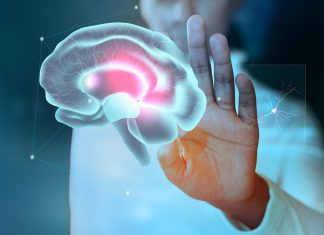MIPT scientists in collaboration with cardiologists of E. N. Meshalkin Research Center investigated the effect of botulinum toxin A on heart tissue. The findings were published in Naunyn-Schmiedeberg’s Archives of Pharmacology. This was reported in MIPT’s press service.
Botulinum toxin A is a common inhibitor, i.e., a suppressor of physiological and physico-chemical processes with a wide range of applications in modern medicine. For example, it is used to prepare drugs for botox injections that block the transmission of nerve impulses to the muscle. As a result, facial muscles are straightened and wrinkles disappear. Recently, botulinum toxin A drugs have been used in clinical trials to suppress cardiac arrhythmias, especially in the postoperative period. Its antiarrhythmic effect is due to the depression of the nervous system of the heart, but its direct effect on heart tissue remained unclear.
Cardiologists believe that injections of modified botulinum toxin can successfully block the unwanted spread of excitation in the heart and relieve arrhythmia, which can have quite significant positive consequences. Cardiac arrhythmias are currently treated with surgical intervention. To eliminate atrial fibrillation, a piece of living heart tissue is burned out by microwaves during surgery.
“Currently, the drug is undergoing intensive testing and will soon proceed to clinical trials. Blocking arrhythmia with an inhibitor causes only minimal damage, and since experiments are done in our laboratory on cardiac tissue culture, we were able to test the hypothesis directly at the cellular level,” commented Konstantin Agladze, head of the Laboratory of Biophysics of Excitable Systems at MIPT.
Scientists have studied the effect of botulinum toxin A on isolated cardiac cells and on layers of conducting cardiac cells. Optical mapping has shown that in the presence of botulinum toxin A, the propagation of the excitation wave in the layer of heart cells slows down sharply, with conduction becoming chaotic at high concentrations, and re-entry waves are not formed.
“We used the drug in several variations. The inhibitory effect of its combination with chitosan was stronger by an order of magnitude. In addition, the inhibitory effect of botulinum toxin A is not permanent and disappears after 12 days in cell culture in an environment that does not contain the toxin. Thus, its antiarrhythmic effect is due not only to the nervous system depression, but also to a direct effect on the heart tissue,” Konstantin Agladze added.
In the future, the new method could serve as an alternative to cardiac ablation (a surgical catheter intervention aimed at eliminating cardiac arrhythmias).




